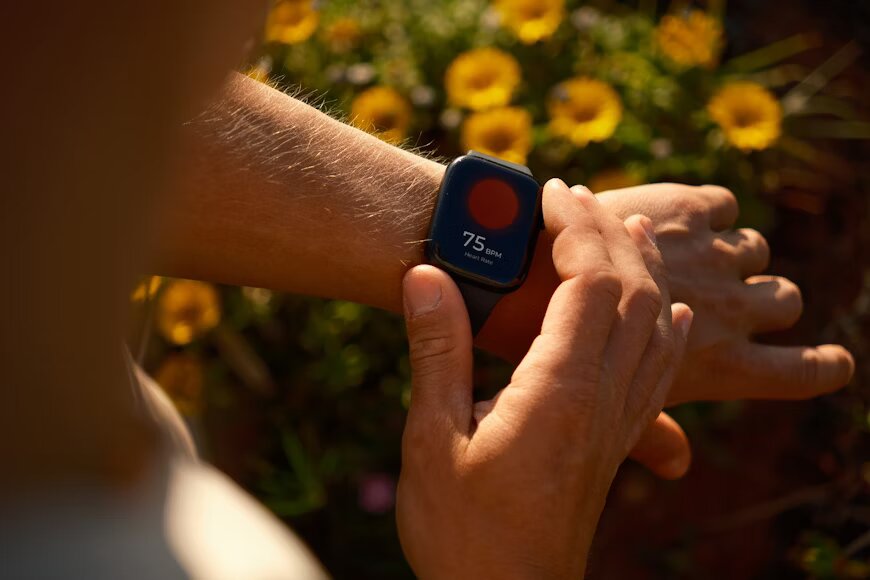Physical Address
60 Ekwema Cres, Layout 460281, Imo
Physical Address
60 Ekwema Cres, Layout 460281, Imo

Wearable medical devices that help patients monitor their health daily are a tremendous aid for those with chronic conditions. Devices to check blood sugar or blood pressure at home are an integral part of the lifestyle of many with diabetes and hypertension.
The fitness tracker with an inbuilt heart rate monitor supports several looking to lose weight or get plenty of exercise every day.
While wearable medical devices undergo rigorous testing for safety and compliance, some studies indicate potential risks that patients should not ignore. These side effects can have physical or mental health repercussions or pose data security challenges.
Here’s how some innovative healthcare companies who have recognized these risks are addressing them.
As wearable medical devices become increasingly integrated into everyday healthcare, attention is shifting from functionality to safety.
Recognising the potential risks—from toxic materials to data vulnerabilities and psychological impacts—forward-thinking healthcare companies are taking decisive steps to safeguard users.
Below are some of the most innovative strategies being implemented to make wearable devices safer, more secure, and more user-friendly.
The most concerning risk of wearables is their constitution: how do the chemicals involved affect the wearer?
A 2024 study found high levels of perfluorohexanoic acid (PFHxA) in some fitness trackers made from fluorinated synthetic rubber. A few scientific groups believe that a percentage of PFHxA may pass through the skin.
Prolonged exposure to these forever chemicals can lead to health problems, from reduced immunity to a higher risk of cancer. Some wearable products can also trigger allergic reactions and skin irritation.
In recent years, many healthcare firms have faced public criticism due to product liability issues that hurt patients.
Pfizer is a case in point and is currently battling with lawsuits for Depo Provera, a contraceptive injection that allegedly made many women prone to developing brain tumours. TruLaw attorneys note that the firm is being held accountable for misrepresentation and negligence of safety.
Unfortunately, such risks may not stay limited to consumable medication or wellness approaches. Some innovative organizations have started exploring safer materials and more thorough testing to make wearables safer. Silicon trackers have emerged as a trustworthy, durable option. This material provides resistance to water and sweat, but it does not need PFHxA.
Ongoing advancements in this field consider the cleanability and microbial buildup in wearable health trackers. Designs that offer superior wrist comfort and easy cleaning can help prevent the accumulation of dirt and grime.
Read Also: Digital Tools and Wellness Tips for Women Exploring the World
Wearable devices undeniably increase the risk of data security breaches—if the companies in question are cavalier about it.
Data theft and privacy issues have become rampant globally. The popularity of AI-based applications that deliver insights inferred from large volumes of data has made these concerns more pressing.
A wearable glucose monitor can extend a wealth of information to companies in pharmaceuticals and medical research. However, this information can wreak havoc if it reaches the wrong hands.
A few healthcare firms have started taking innovative steps to counter the risk of misuse of people-generated health data (PGHD). A two-phase dual authentication framework can boost the safety of the Internet of Medical Things (IoMT). It protects against cyber threats without affecting device performance.
Another reliable solution is to implement Blockchain technology to bolster patient privacy and integrity through immutable ledgers. Innovators and early adopters have started incorporating cryptographic techniques to strengthen IoMT from within.
A study published on Cureus emphasizes that clinicians must also take more responsibility to ensure the safety of PGHD. Some healthcare facilities have started training their staff to conduct these interactions with patients, helping them use wearable devices securely. These steps include using stronger passwords and not sharing personal details with anyone other than trusted healthcare providers.
Read Also: 15 Technological Innovations that Changed the World
Reaching 10,000 steps a day seems like a motivating target that inspires exercise and proactivity. However, what happens when you obsess about metrics like these, repeatedly checking wearable devices for heart rates and sleeping patterns?
BBC finds that fitness trackers can lead to obsessive behavior and cause considerable mental distress. The problem may be worse in those struggling with eating disorders. Trackers often record data for extended periods, which gives you plenty of (figurative) food for obsession.
Further, unfulfilled goals can lead to frustration and aggravate health anxiety in more vulnerable users. Some report feeling better and recovering more quickly after they discontinued wearable devices like these.
As acceptance of mental health management grows, more organizations are stepping up and taking notice. Some trackers now incorporate messaging for flexibility, encouraging users to take breaks and not brood over calories or step counting. One can find wearables that inherently account for daily and seasonal variations in vital parameters.
Healthcare innovations are responsible for helping thousands of people around the globe, offering hope for managing acute conditions.
Wearable devices are a significant component of these innovations. They have brought simplicity and convenience to patients in different life stages.
The ongoing efforts to mitigate the associated risks of these devices can encourage people to adopt them to live more fulfilling lives.